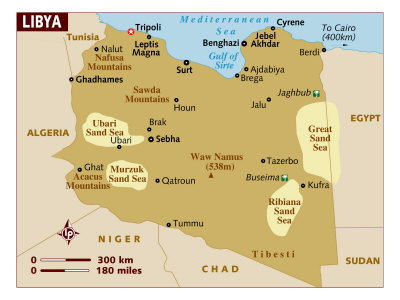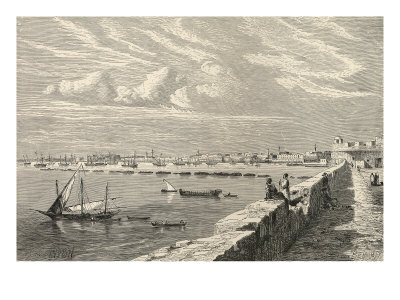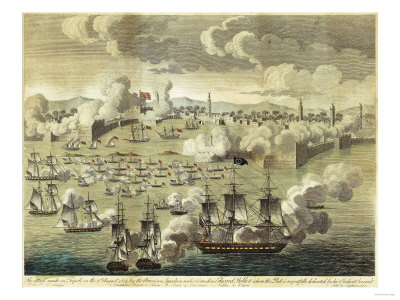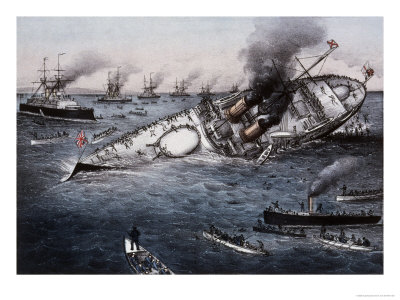Seaport
° Andaman and Nicobar Islands ° Bengal ° Bombay (Mumbai) ° Calcutta ° Cawnpore ° Delhi ° Gujarat ° Indore ° Jodhpur ° The Konkan Coast (Goa) ° Madras (now Chennai) ° Patna (Bihar) ° Tellicherry ° Varkala
International Harbors
The Fortunes of Africa: A 5000-Year History of Wealth, Greed, and Endeavor
Africa has been coveted for its riches ever since the era of the Pharaohs. In past centuries, it was the lure of gold, ivory, and slaves that drew fortune-seekers, merchant-adventurers, and conquerors from afar. In modern times, the focus of attention is on oil, diamonds, and other valuable minerals. He traces the rise and fall of ancient kingdoms and empires; the spread of Christianity and Islam; the enduring quest for gold and other riches; the exploits of explorers and missionaries; and the impact of European colonization.
The Diary of Antera Duke: An Eighteenth-Century African Slave Trader
Stephen D. Behrendt, A. J. H. Lathma, David Northrup
In his diary, Antera Duke (ca.1735-ca.1809) wrote an eyewitness account of the slave trade by an African merchant. A leader in late eighteenth-century Old Calabar, a cluster of Efik-speaking communities in the Cross River region, he resided in Duke Town, forty-five miles from the Atlantic Ocean in what is now southeast Nigeria. His diary, written in trade English from 1785 to 1788, is a candid account of daily life in an African community at the height of Calabar's overseas commerce. It provides valuable information on economic activity with other African businessmen and with European ship captains who arrived to trade for slaves, produce, and provisions.
Basil Davidson states that by examining three important areas of Africa in the history of slavery against a general background of their time and circumstance he was taking "a fresh look at the overseas slave trade, the steady year-by-year export of African labour to the West Indies and the Americas that marked the era of forced migration." (Africans were joined in forced camps by abused laborers from China, "indentured servants" from Ireland, and Britain's hideous prison hulks.)
The Middle Passage: White Ships/Black Cargo
Tom Feelings
Alex Haley's Roots awakened many Americans to the cruelty of slavery. The Middle Passage focuses attention on the torturous journey which brought slaves from Africa to the Americas, allowing readers to bear witness to the sufferings of an entire people. 64 paintings.
The Counter-Revolution of 1776: Slave Resistance and the Origins of the United States of America
Gerald Home
The successful 1776 revolt against British rule in North America has been hailed almost universally as a great step forward for humanity. But the Africans then residing in the colonies overwhelmingly sided with London. Gerald Horne complements his earlier celebrated Negro Comrades of the Crown, by showing that in the prelude to 1776, the abolition of slavery seemed all but inevitable in London, delighting Africans as much as it outraged slaveholders, and sparking the colonial revolt.
Middle Passages: African American Journeys to Africa, 1787-2005
James T. Campbell
Many works of history deal with the journeys of blacks in bondage from Africa to the United States along the middle passage, but there is also a rich history of African Americans traveling in the opposite direction. In Middle Passages, award-winning historian James T. Campbell recounts more than two centuries of African American journeys to Africa, including the experiences of such extraordinary figures as Langston Hughes, W.E.B. DuBois, Richard Wright, Malcolm X, and Maya Angelou. This series is under presiding editor Arthur Schlesinger, Jr.
LIBYA: Benghazi Marsa El Braga Ras Lanuf Tripoli
Behghazi
The Port of Benghazi, called Euesperides (or Hesperides) at that time, was founded by the ancient Greeks of Cyrenaica in the 6th Century BC. The Greeks passed it to Ptolemy III, Egyptian pharaoh, naming it Berenice to honor the pharaoh’s wife. The city’s modern name honors a benefactor named Ghazi (Bani Ghazi means Ghazi ’s descendants). After the 3rd Century AD, it surpassed Barce and Cyrene as the region's main center. Later, it began to decline, and it was a small town until the Italians occupied the Port of Benghazi from 1912 to 1942. During the era of Kingdoms in Libya, the Port of Benghazi was more or less a joint capital with the Port of Tripoli, and it continues to house many organizations and institutions normally associated with a country's capital city. This favored status has led to a strong rivalry between the cities and the regions in which they are located (Cyrenaica and Tripolitania).
Tripoli
June 12, 1898, San Antonio Daily Express
San Antonio, Texas, U.S.A.
Our War Against the Pirates
The Mediterranean sea less than 100 years ago was infested with pirates, who took into captivity the ships and crews of such nations as had not in some way made peace with or paid tribute to the Barbary powers. Several American vessels suffered at the hands of these buccaneers, and at one time in a single cruise ten of our vessels were captured, and in November, 1793, the number of American prisoners at Algiers was 115.
To the dey of Algiers the United States, like other powers, paid enormous tribute, and to fulfill one treaty it cost nearly $1,000,000. In 1798, having fallen behind In our payments of tribute, we sent four armed vessels to the dey for arrearages, and our consul, in presenting these gifts, was forced to kiss the hand of the piratical potentate.
The cost of buying freedom for our ships from the Barbary powers had amounted In 1801 to more than $2,000, 000. The United States finally made up its mind that this was a condition which no longer could be endured. On the 14th of May, 1801, after repeated insults and demands, the pasha of Tripoli cut down the flagstal of the American consulate in Tripoli and notified the consul that he declared war.
Under Commodore Dale the Enterprise left Hampton Roads and arrived at Gibraltar at the beginning of July 1801. It appeared oft Tripoli and Tunis before the pirates of the Mediterranean had any thought of such a visitor and met the Tripolltan corsair, the Tripoli, and left it after an engagement of three hours a complete wreck, having killed or wounded 20 of the men and escaping with every man of its own crew unharmed. This was the real beginning of the war with Tripoli. President Jefferson was disinclined to engage further in hostilities without an act of congress notwithstanding Tripoli had declared war. Although something was done against the piratical powers In 1801 and 1802, nothing in the way of actual, elaborate war was again on until 1804, congress having passed an act two years before which was virtually a declaration of war.
In 1803, Commodore Preble left for the Mediterranean with a new squadron of two frigates, two brigs and three schooners. By an accident one of his best ships fell into, the enemy's hands, but he afterward found opportunity to destroy this vessel and deprive the enemy of its use.
|
On the 25th of July, 1804, after much wandering up and down the waters of the Mediterranean, Commodore Preble's entire squadron took its station before Tripoli, and with the bombardment of the capital on the 3d of August began a series of engagements that developed an energy and a heroism in the American navy which were the admiration of the world.
It was here that the famous Constitution did such effective work. Before the end of the year the Tripolitans were glad to make terms with this country, and the treaty then established ended forever piratical assaults on American commerce by the Barbary powers.
Stevens Point Daily Journal
Stevens Point, Wisconsin, July 1, 1893
A NAVAL HORROR.
The British Battleship Victoria Sunk in the Mediterranean Sea.
DEATH ON THE DEEP
London, June 24.--Her majesty's great twin screw battleship Victoria, flying the flag of Vice Admiral George C.Tyron, K.C.B., Commander of the Mediterranean station, was sunk in 18 fathoms of water off Tripoli, and at least 400 of her officers and crew went tothe bottom with her. The disaster was due to the fearful bungling of either her own officers or those of the battleship Camperdown. In broad daylight, during a maneiver, she was run into head on by her companion ship, and in less than a quarter of an hour she had disappeared in the waves, carrying with her all on board. Twenty-one officers, including Vice Admiral Tyron, are reported drowned, and the great fighting ship lies a useless wreck, bottom side up, beneath the waves.
The information so far received is scant, but enough news has come from Syria to make it apparent that the disaster is one of the most horrible, as well as one of the most disgraceful, that has ever befallen the English navy. Tripoli, near where the accident happened, is about 70 miles from Damascus. It has a small harbor, which is so shallow as to be notoriously unsafe. It is supposed that the Victoriafound a lack of sea room in putting about as the Camperdown came on and the latter boat hit the flagship squarely on the starboard side with her ram. TheCamperdown was moving under a high steam pressure and the effect was such as would have been made with an ax on a plank.
The plates of the Victoria just forward of the turret were torn apart and a perfect flood poured into the hold of the flagship. She began to sink immediately. The engines of the Camperdown were reversed at once, but not before she had hit theVictoria a second time and completed the work of destruction. Every effort was made to save the ship, but the Victoria settled so fast that this was seen to be impossible, and the men, losing all discipline, cast loose the small boats and attempted to reach the Camperdown. Only three of the boats got free of the suction of the sinking ship. The rest were overturned and many of the occupants of these were drowned with the men who were cooped up in the battleship beyond all chance of rescue. Vice Admiral Tryon is said to be one of those who went down with the ship. The Victoria hardly moved forward after the blow. The water poured so rapidly into her engine-room that the fires were extinguished before the engineer had time to speak.
The Camperdown was in command of Capt. Charles Johnstone. Every effort was made by her officers and crew to save the wretched men of the Victoria. All her boats were put out and many of the Victoria men were picked up in the water besides those taken from the fortunate boats of the flagship. The number of saved is given at 250. The officers of the Victoria are reported to have acted with great bravery and coolness. Most of them stuck to the ship till the last, trying to steady their men and cast loose the boats. The action of the younger officers is especially commended. Many of them went down with the ship. The Victoria sank evenly till the water in the starboard side pulled her over, when she capsized completely, with her keel in the air.
The Victoria was a battleship of 10,470 tons and 14,000-horse power and mounted fifty guns. She was built by the Armstrongs and was regarded as one of the crack fighting machines of the British Navy. Her model is now in Chicago at the exposition. She was selected as Sir George Tryon's flagship when Tryon was made vice admiral, and assigned to the Mediterranean station August 20, 1891. TheCamperdown is also of the Mediterranean fleet and is a slightly smaller boat than the Victoria. She is of 10,000 tons and 11,500-horse power. Admiral Trjon's Record.
Libya1899. World's Fleet. Boston Daily Globe
Lloyds Register of Shipping gives the entire fleet of the world as 28,180 steamers and sailing vessels, with a total tonnage of 27,673,628, of which 39 perent are British.
| Great Britain | 10,990 vessels, total tonnage of 10,792,714 |
| United States | 3,010 vessels, total tonnage of 2,405,887 |
| Norway | 2,528 vessels, tonnage of 1,604,230 |
| Germany | 1,676 vessels, with a tonnage of 2,453,334, in which are included her particularly large ships. |
| Sweden | 1,408 vessels with a tonnage of 643, 527 |
| Italy | 1,150 vessels |
| France | 1,182 vessels |
For Historical Comparison
Top 10 Maritime Nations Ranked by Value (2017)
| Country | # of Vessels | Gross Tonnage (m) |
Total Value (USDbn) |
|
|---|---|---|---|---|
| 1 | Greece | 4,453 | 206.47 | $88.0 |
| 2 | Japan | 4,317 | 150.26 | $79.8 |
| 3 | China | 4,938 | 159.71 | $71.7 |
| 4 | USA | 2,399 | 55.92 | $46.5 |
| 5 | Singapore | 2,662 | 64.03 | $41.7 |
| 6 | Norway | 1,668 | 39.68 | $41.1 |
| 7 | Germany | 2,923 | 81.17 | $30.3 |
| 8 | UK | 883 | 28.78 | $24.3 |
| 9 | Denmark | 1,040 | 36.17 | $23.4 |
| 10 | South Korea | 1,484 | 49.88 | $20.1 |
| Total | 26,767 | 87.21 | $466.9 | |













 Copyright ~ 1998-2018.
Copyright ~ 1998-2018. 